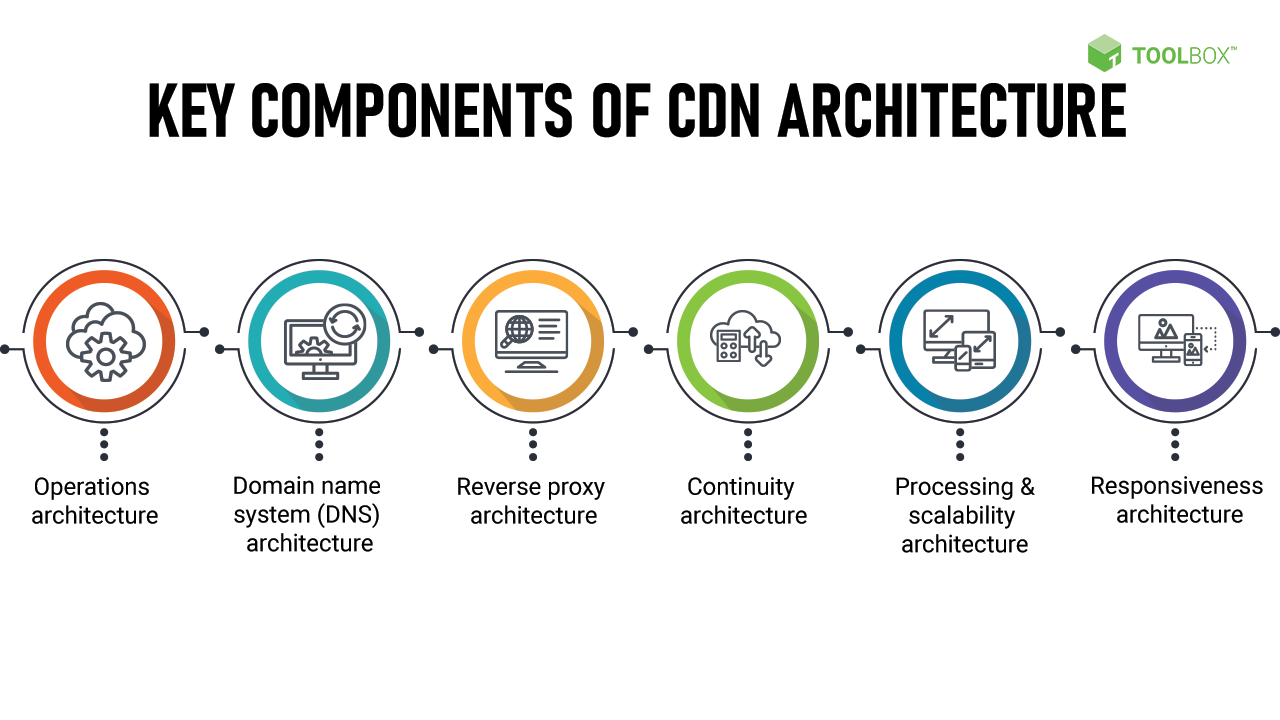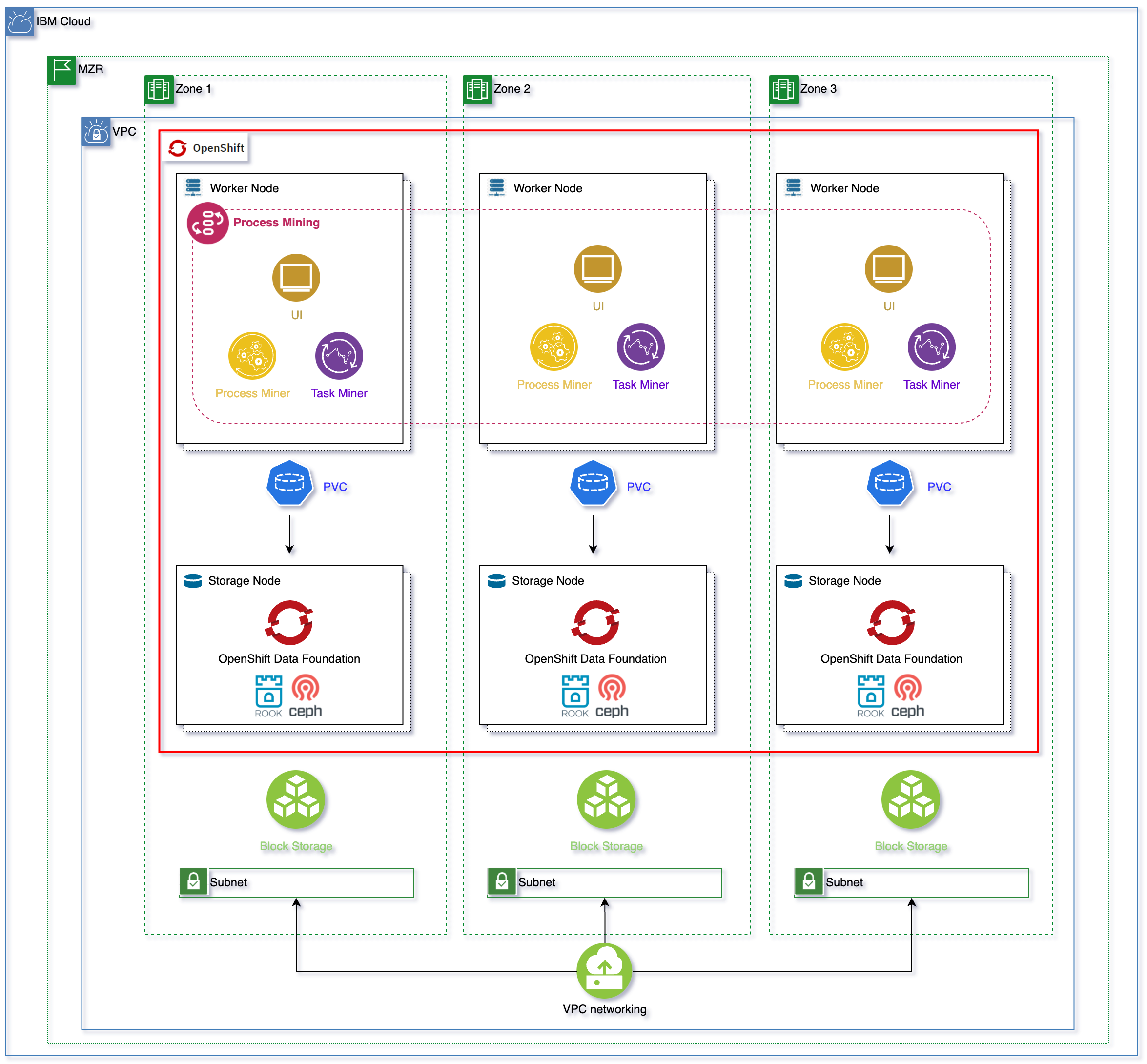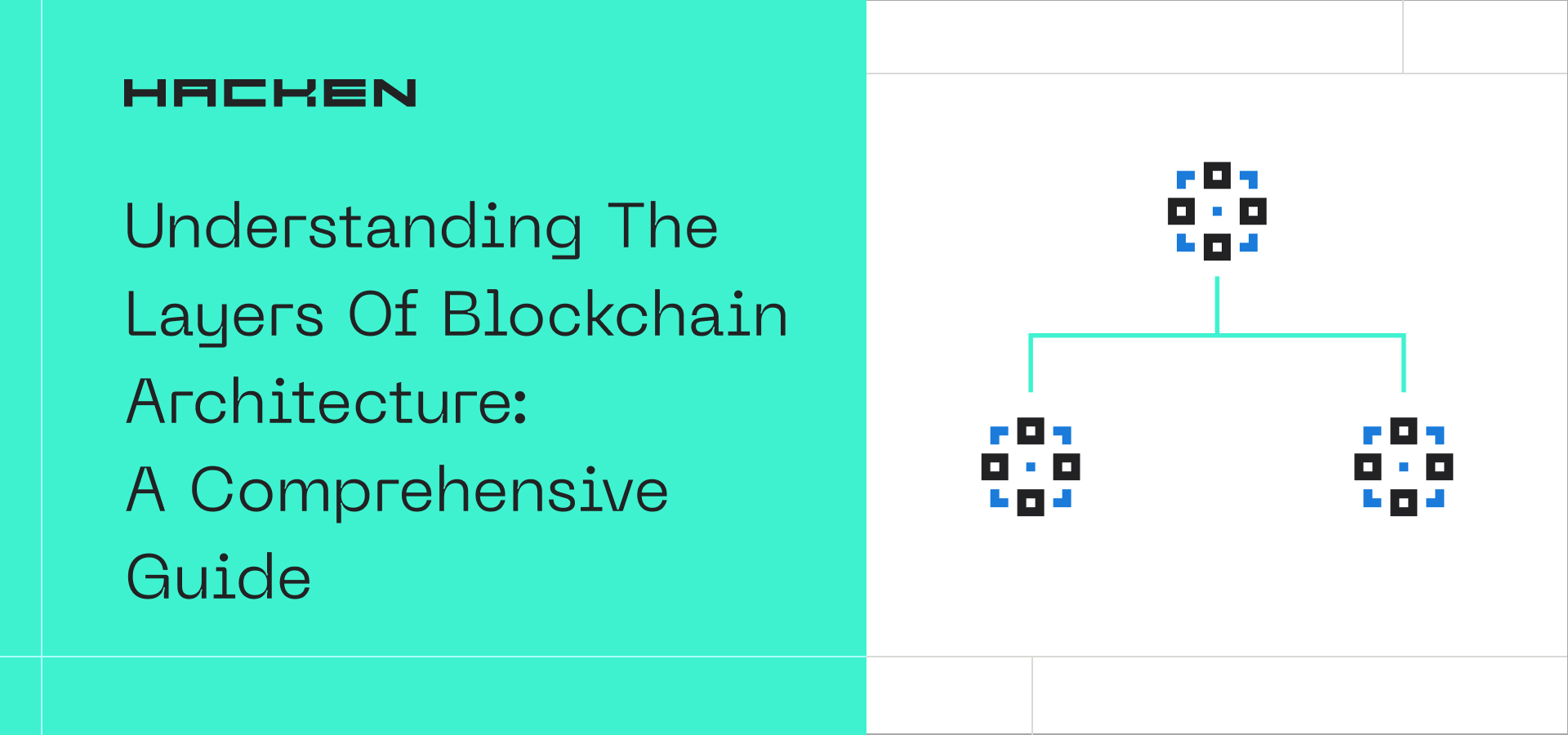Understanding Hybrid Cloud Architecture: The Future of Cloud Computing
In today’s rapidly evolving digital landscape, businesses are increasingly turning to cloud computing to drive innovation, improve operational efficiency, and enhance scalability. Hybrid cloud architecture has emerged as a game-changer, offering organizations unparalleled flexibility, seamless integration, and cost optimization. In this comprehensive guide, we will delve into the intricacies of hybrid cloud architecture, exploring its key characteristics, benefits, implementation strategies, and future trends.
What is Hybrid Cloud Architecture?
Hybrid cloud architecture refers to the combination of public and private cloud infrastructure, creating a unified computing environment that seamlessly integrates on-premises resources with cloud-based services. By leveraging the strengths of both public and private clouds, organizations can achieve a balance between security, control, and scalability. This hybrid approach allows businesses to run critical applications and store sensitive data on private infrastructure while leveraging the scalability and cost-efficiency of public clouds for non-sensitive workloads.
Key Characteristics of Hybrid Cloud Architecture
Hybrid cloud architecture exhibits several key characteristics that set it apart from traditional cloud models:
- Flexibility: Hybrid cloud enables businesses to dynamically allocate workloads between public and private infrastructure, providing the flexibility to scale resources up or down based on fluctuating demands.
- Seamless Integration: Hybrid cloud allows for seamless integration between public and private clouds, enabling smooth data transfer and application interoperability.
- Security: With hybrid cloud architecture, organizations can keep sensitive data on their private infrastructure while taking advantage of the security measures provided by public cloud providers for non-sensitive workloads.
- Cost Optimization: By leveraging public clouds for non-sensitive workloads, businesses can optimize costs by paying only for the resources they consume, avoiding the need for extensive on-premises infrastructure.
Benefits of Hybrid Cloud Architecture
Hybrid cloud architecture offers a multitude of benefits for businesses:
1. Increased Scalability
One of the key advantages of hybrid cloud architecture is its ability to scale resources on-demand. By leveraging public clouds for peak workloads, businesses can avoid overprovisioning on-premises infrastructure, reducing costs and ensuring optimal performance during periods of high demand.
2. Enhanced Flexibility
Hybrid cloud architecture provides businesses with the flexibility to leverage the best of both worlds. It allows organizations to retain control over critical applications and sensitive data on private infrastructure while taking advantage of the agility and scalability offered by public clouds for non-sensitive workloads.
3. Improved Security
Security is a top priority for businesses, especially when it comes to sensitive data. Hybrid cloud architecture enables organizations to keep sensitive data on their private infrastructure, providing greater control and security. Public cloud providers also offer robust security measures and compliance certifications, ensuring the safety of non-sensitive workloads.
4. Cost Optimization
Hybrid cloud architecture enables businesses to optimize costs by leveraging the cost-efficiency of public clouds. By moving non-sensitive workloads to the public cloud, organizations can avoid the capital expenditure associated with extensive on-premises infrastructure and instead pay for resources on a usage basis.
5. Disaster Recovery and Business Continuity
Hybrid cloud architecture provides organizations with robust disaster recovery and business continuity capabilities. By replicating critical data and applications across multiple locations, including both private and public clouds, businesses can ensure data resilience and minimize downtime in the event of a disaster.
6. Geographical Redundancy
Hybrid cloud architecture allows businesses to deploy applications and data across multiple geographic locations, providing redundancy and minimizing the risk of data loss or service disruption. This ensures high availability and improved performance for users across different regions.
Implementing Hybrid Cloud Architecture
Implementing hybrid cloud architecture requires careful planning and consideration of various factors:
1. Assessing Workloads and Requirements
Before implementing hybrid cloud architecture, businesses need to assess their workloads and determine which ones are best suited for public or private clouds. Critical applications and sensitive data may be better suited for private infrastructure, while non-sensitive workloads can be migrated to the public cloud.
2. Selecting the Right Cloud Providers
Choosing the right mix of public and private cloud providers is crucial for a successful hybrid cloud implementation. Organizations need to evaluate factors such as reliability, scalability, security measures, and compatibility with existing infrastructure to ensure seamless integration and optimal performance.
3. Establishing Connectivity
Connectivity between public and private cloud infrastructure is essential for a cohesive hybrid cloud environment. Businesses can establish connectivity through dedicated network links, virtual private networks (VPNs), or direct interconnections offered by cloud service providers.
4. Data Integration and Management
Effective data integration and management are critical for a seamless hybrid cloud architecture. Businesses need to ensure data synchronization, integrity, and availability across both public and private clouds. This may involve implementing data integration tools, establishing data governance policies, and leveraging hybrid cloud management platforms.
5. Security and Compliance
Implementing robust security measures and ensuring compliance with industry regulations is paramount in hybrid cloud architecture. Organizations must adopt encryption, access controls, and monitoring mechanisms to protect sensitive data and adhere to compliance requirements specific to their industry.
Security in Hybrid Cloud Architecture
Security is a top concern for businesses operating in the cloud. In hybrid cloud architecture, organizations need to implement a comprehensive security framework that addresses the unique challenges and considerations associated with this model:
1. Data Protection
Businesses need to implement robust data protection measures to ensure the confidentiality, integrity, and availability of sensitive data. This may involve encryption, backup and recovery mechanisms, access controls, and data monitoring tools.
2. Identity and Access Management
Implementing strong identity and access management practices is crucial to secure hybrid cloud architecture. Organizations should enforce multi-factor authentication, role-based access controls, and regular access reviews to prevent unauthorized access to their cloud resources.
3. Network Security
Securing the network infrastructure is essential in hybrid cloud architecture. Businesses should implement firewalls, intrusion prevention systems, and virtual private networks (VPNs) to protect data in transit and ensure secure communication between different cloud environments.
4. Compliance and Regulatory Requirements
Hybrid cloud architecture requires organizations to comply with industry-specific regulations and standards. Businesses must ensure that their cloud providers have the necessary certifications and compliance frameworks in place and establish policies and procedures to meet regulatory obligations.
Hybrid Cloud vs. Public Cloud vs. Private Cloud
Hybrid cloud architecture offers distinct advantages over public and private cloud models. Understanding the differences can help businesses make informed decisions about the most suitable cloud computing approach for their specific needs:
1. Public Cloud
Public cloud refers to the deployment of applications and data on shared infrastructure that is owned and managed by a cloud service provider. It offers scalability, cost-efficiency, and minimal upfront investment. However, businesses have limited control over security and may face compliance limitations.
2. Private Cloud
Private cloud involves the deployment of applications and data on dedicated infrastructure, either on-premises or hosted in a third-party data center. It provides greater control, security, and compliance adherence. However, private cloud infrastructure requires significant upfront investment and may lack the scalability and cost-efficiency of public clouds.
Use Cases of Hybrid Cloud Architecture
Hybrid cloud architecture finds applications across various industries, enabling businesses to leverage the benefits of both public and private clouds. Some prominent use cases include:
1. Healthcare
In the healthcare industry, hybrid cloud architecture allows for the secure storage and sharing of sensitive patient data on private infrastructure, while leveraging the computational power and agility of public clouds for data analytics, research, and collaboration.
2. Finance
Financial institutions can benefit from hybrid cloud architecture by keeping customer financial data on private infrastructure for enhanced security and compliance, while utilizing public clouds for non-sensitive workloads such as customer relationship management (CRM) systems or data analytics.
3. E-commerce
E-commerce businesses can leverage hybrid cloud architecture to ensure high availability and scalability during peak shopping seasons by using public clouds for handling increased website traffic, while keeping sensitive customer and transaction data on private infrastructure.
Challenges and Considerations
Implementing hybrid cloud architecture comes with its own set of challenges and considerations. Businesses need to address these factors to ensure a successful implementation:
1. Integration Complexity
Integrating public and private cloud infrastructure can be complex, requiring compatibility between different platforms, data synchronization, and interoperability between applications. Organizations need to plan and execute integration strategies carefully to avoid disruptions and ensure seamless operation.
2. Vendor Lock-In
Businesses should be cautious of vendor lock-in when adopting hybrid cloud architecture. They need to ensure that they have the flexibility to switch cloud providers or move workloads between different environments without significant challenges orlimitations. This can be achieved by adopting interoperable standards, using containerization technologies, and implementing multi-cloud management tools.
3. Data Governance and Compliance
Hybrid cloud architecture requires careful consideration of data governance and compliance requirements. Organizations need to establish policies and procedures to ensure data sovereignty, privacy, and compliance with industry regulations. This may involve data classification, encryption, and regular audits to maintain data integrity and meet regulatory obligations.
4. Monitoring and Performance Optimization
Monitoring and optimizing the performance of hybrid cloud architecture is essential to ensure optimal resource utilization and user experience. Organizations should implement monitoring tools to track performance metrics, identify bottlenecks, and optimize resource allocation across cloud environments.
5. Skills and Expertise
Adopting hybrid cloud architecture may require businesses to acquire or develop the necessary skills and expertise. IT teams should be equipped with the knowledge and capabilities to manage and operate both private and public cloud environments effectively. This may involve training programs, hiring skilled professionals, or partnering with managed service providers.
Future Trends in Hybrid Cloud Architecture
Hybrid cloud architecture continues to evolve, driven by emerging technologies and industry trends. Some of the future trends that are shaping the landscape of hybrid cloud architecture include:
1. Edge Computing
Edge computing involves bringing computation and data storage closer to the source of data generation. In the context of hybrid cloud architecture, edge computing enables organizations to process and analyze data at the edge of the network, reducing latency and improving real-time decision-making capabilities.
2. Serverless Architecture
Serverless architecture, also known as Function as a Service (FaaS), allows businesses to build and run applications without the need to manage underlying infrastructure. In a hybrid cloud environment, serverless architecture can be leveraged to optimize resource allocation, reduce costs, and improve scalability.
3. Containerization
Containerization technologies, such as Docker and Kubernetes, are gaining popularity in hybrid cloud architecture. Containers provide a lightweight and scalable way to package applications and their dependencies, making it easier to deploy and manage applications across different cloud environments.
4. Artificial Intelligence and Machine Learning
Artificial intelligence (AI) and machine learning (ML) technologies are increasingly being integrated into hybrid cloud architectures. By leveraging public cloud resources for AI and ML workloads, businesses can take advantage of the computational power and specialized tools offered by cloud providers to drive innovation and gain insights from large-scale data processing.
Best Practices for Hybrid Cloud Architecture
To optimize the implementation and operation of hybrid cloud architecture, businesses should adhere to a set of best practices:
1. Workload Management
Effectively managing workloads is crucial in hybrid cloud architecture. Organizations should analyze their workloads and determine which ones are best suited for public or private clouds. This includes considering factors such as performance requirements, data sensitivity, and compliance regulations.
2. Data Synchronization and Replication
Ensuring data synchronization and replication between public and private cloud environments is essential for maintaining data integrity and consistency. Organizations should implement data synchronization mechanisms, replication strategies, and backup and recovery processes to ensure data availability and minimize the risk of data loss.
3. Performance Monitoring and Optimization
Continuous performance monitoring and optimization are critical for hybrid cloud architecture. Businesses should implement monitoring tools to track resource utilization, identify performance bottlenecks, and optimize resource allocation based on workload demands. This includes leveraging auto-scaling capabilities and load balancing techniques to ensure optimal performance and cost efficiency.
4. Disaster Recovery and Business Continuity
Implementing robust disaster recovery and business continuity strategies is essential in hybrid cloud architecture. Organizations should replicate critical data and applications across multiple cloud environments, establishing failover mechanisms and conducting regular disaster recovery drills to ensure data resilience and minimize downtime.
5. Security and Compliance Governance
Security and compliance should be at the forefront of hybrid cloud architecture. Businesses should implement a comprehensive security framework that includes encryption, access controls, identity and access management, and regular security audits. Compliance with industry-specific regulations should also be a priority, with businesses staying up to date on evolving compliance requirements.
Choosing the Right Hybrid Cloud Provider
When selecting a hybrid cloud provider, businesses should consider various factors to ensure a successful and reliable hybrid cloud architecture:
1. Reliability and Service Level Agreements (SLAs)
Reliability is crucial for a hybrid cloud provider. Organizations should evaluate the provider’s track record, uptime guarantees, and SLAs to ensure minimal service disruptions and maximum availability.
2. Scalability and Elasticity
Scalability and elasticity are key considerations in hybrid cloud architecture. Businesses should assess the provider’s ability to scale resources based on workload demands, ensuring that the infrastructure can handle peak loads without performance degradation.
3. Customer Support and Service Level Agreements (SLAs)
Responsive and reliable customer support is essential for hybrid cloud architecture. Organizations should evaluate the provider’s support channels, response times, and escalation procedures to ensure prompt resolution of any issues or concerns.
4. Security Measures and Compliance
Security is paramount in hybrid cloud architecture. Businesses should assess the provider’s security measures, including encryption, access controls, and compliance certifications, to ensure the protection of sensitive data and adherence to regulatory requirements.
5. Pricing Models and Cost Transparency
Pricing models and cost transparency play a crucial role in selecting a hybrid cloud provider. Organizations should evaluate pricing structures, including data transfer costs, storage fees, and compute charges, to ensure cost predictability and avoid unexpected expenses.
In conclusion, hybrid cloud architecture offers businesses the best of both worlds by combining the scalability and cost-efficiency of public clouds with the control and security of private infrastructure. By understanding the intricacies of hybrid cloud architecture and implementing best practices, organizations can unlock the full potential of this innovative approach and stay ahead in the rapidly evolving digital landscape. With careful planning, consideration of challenges and future trends, and the selection of the right hybrid cloud provider, businesses can harness the power of hybrid cloud architecture to drive innovation, improve efficiency, and achieve their long-term strategic objectives.









